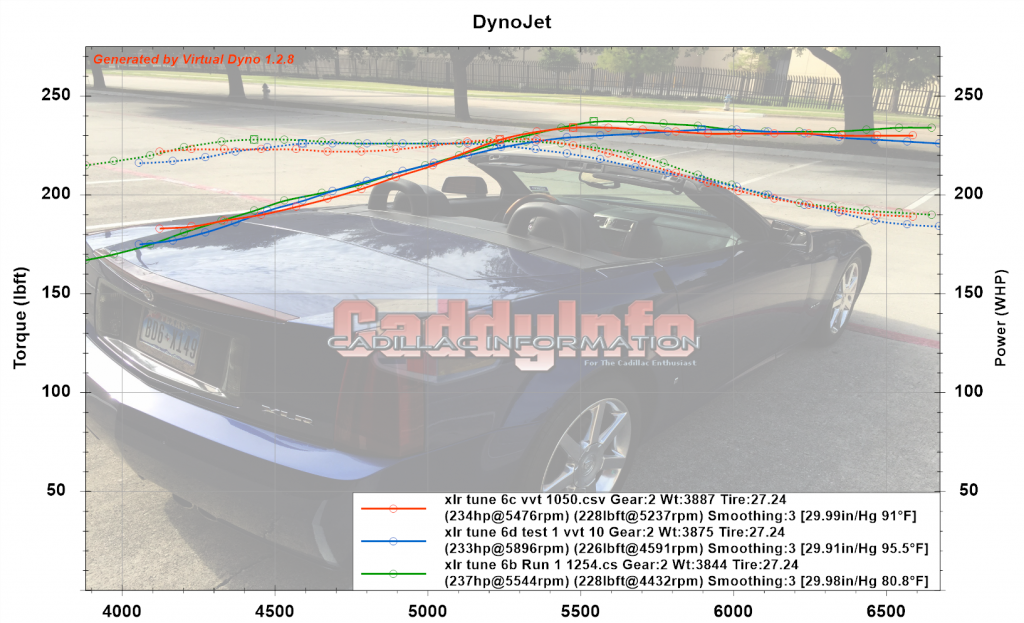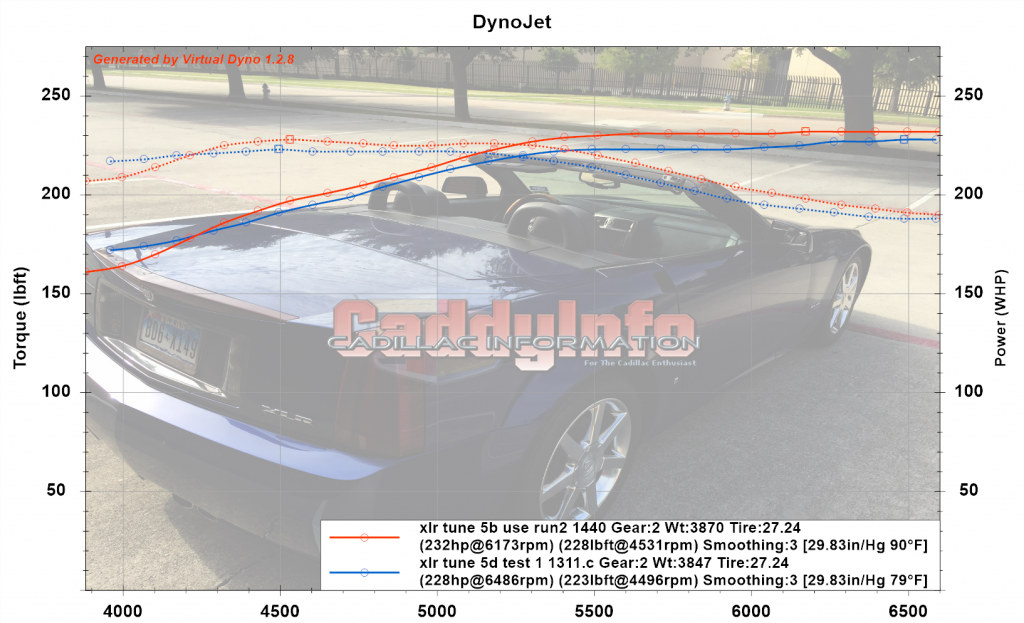One change for the Cadillac Northstar in the LH2 variant was the addition of variable valve timing. Today’s test is a slight change in the VVT timing on the intake and exhaust to see what impact on our test results. I also restored the IAT retard at higher temps (no impact today).
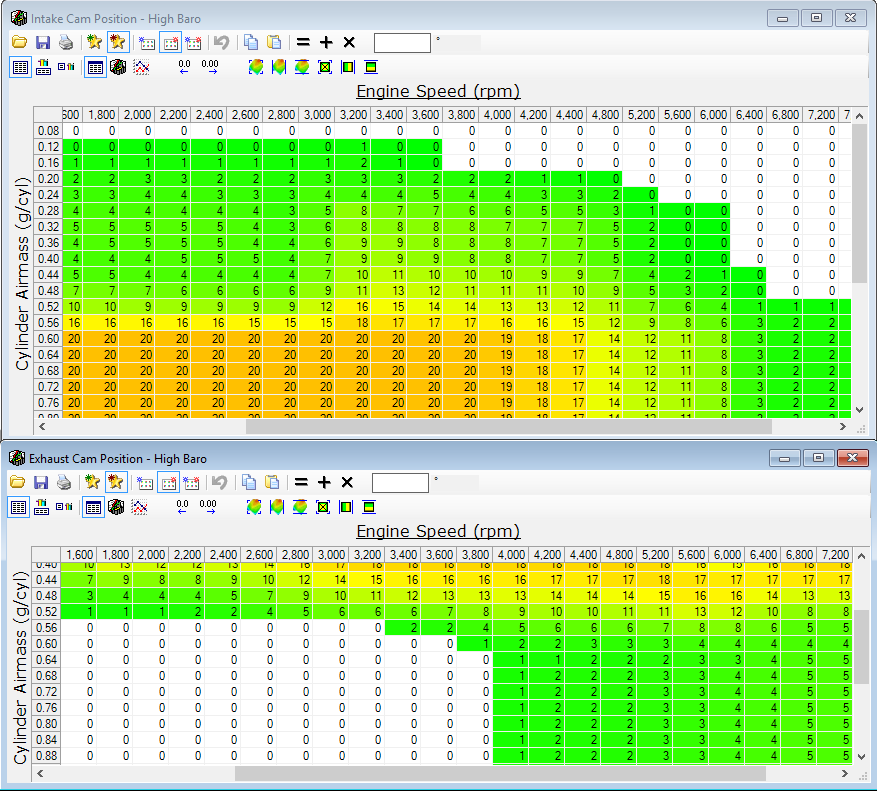
This table shows the base VVT timing. I am focused on 5200-6800 rpm, around 0.56-0.60 cylinder airmass.
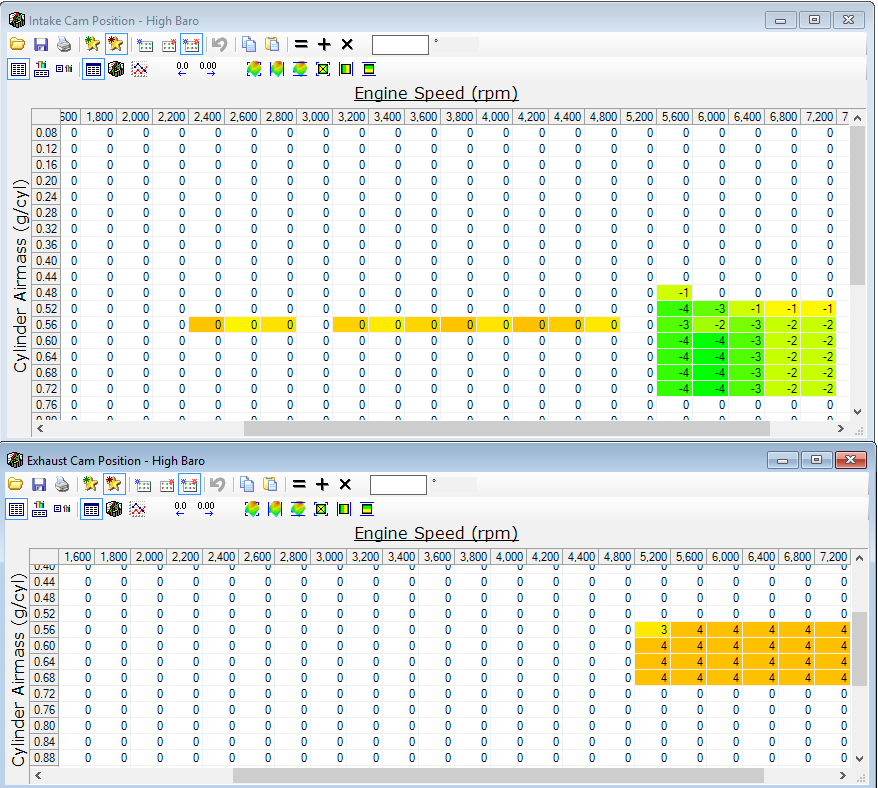
These tables show the changes for Tune 6a. The intake cam is degrees of advance, and the exhaust cam is degrees of retard. For Tune 6a I retarded the intake cam from 5600-6800 rpm and ALSO retarded the exhaust cam in the same region in order to keep the overlap the same.
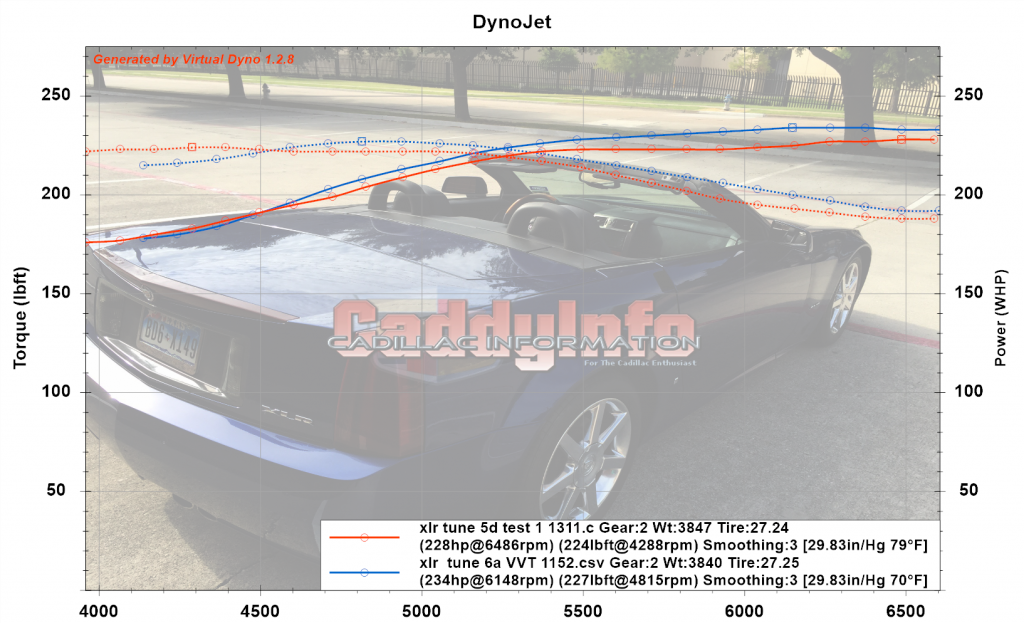
For this test we are focused on 5600-6800 RPM. Different days, different conditions, so I see that today’s test (BLUE) is healthier at lower rpm as well — ahead by 5 whp at 5200 rpm.
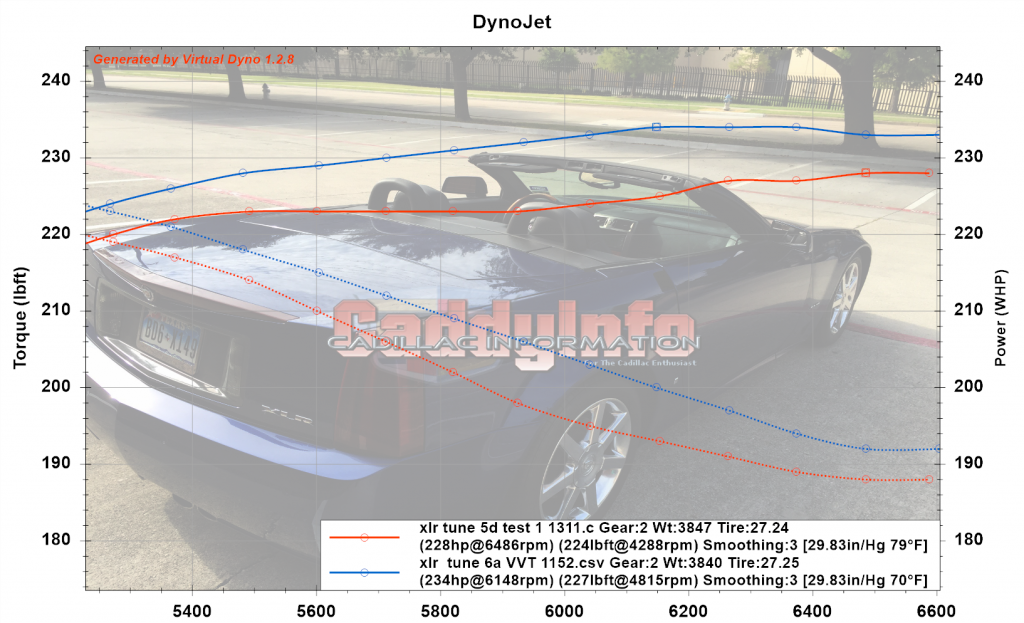
For this chart I have zoomed in to just the 5300-6600 range. Today’s tune (BLUE) appears to do much better at 6000 rpm, (9 whp at 5900-6000 rpm) although less better at 6600 rpm (5 whp)
Looking at the timing tables, I kept the retard on the exhaust at 4 degrees across even though the retard on the intake cam could not be that high (because it was already at 0).
For Tune 6b I will reduce the exhaust retard to match the intake retard in each area — that was my intent for the test.
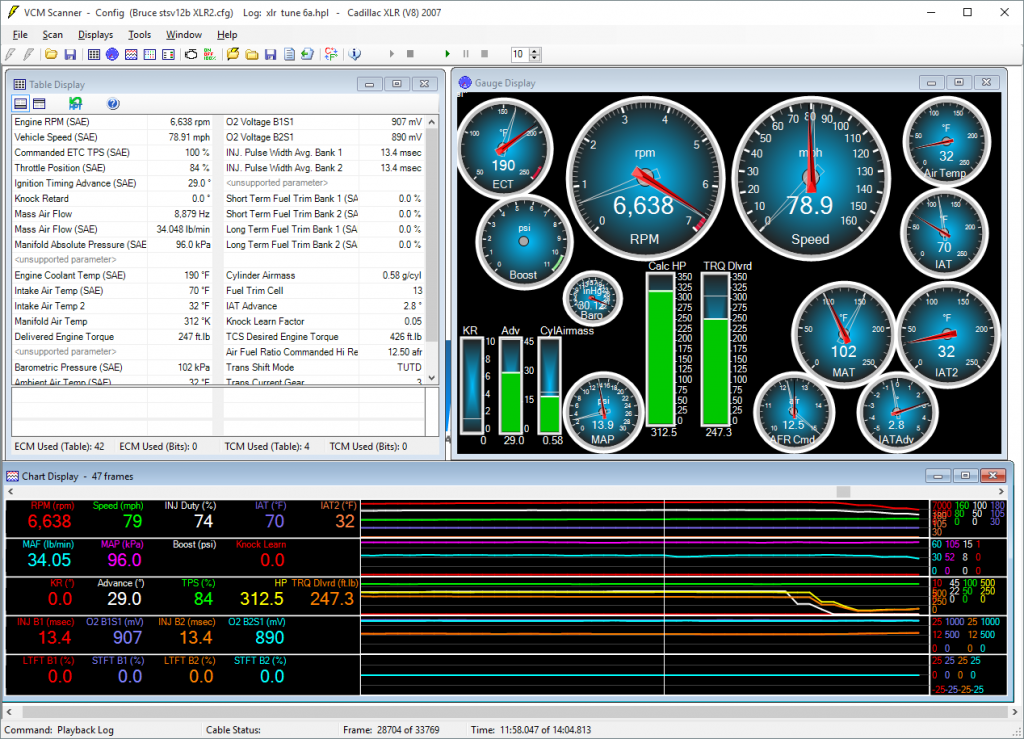
This is the HPTuners VCM Scanner shot at peak calculated hp of 312.5 hp at 6638 RPM.
Timing is a healthy 29 degrees of advance including 2.8 degrees of IAT advance.
Less Timing?
I have been thinking about the overall test results I am seeing — and about how the XLR seems to get better results hot than cold (adjusted for temperature). I suspect the LH2 would actually like LESS timing instead of more.

In the main spark table (high octane), the OEM calibration lowers the timing as the cylinder airmass increases. This trend occurs up to the cylinder airmass at WOT — 0.56 to 0.64 — where it has gone flat for the rest of the table. At high temps the engine gets retard from IAT and ETC which pulls the timing down. At lower temps it gets advance from IAT which pushes the timing up. I wonder if it wants less timing.
Next test: match the exhaust cam retard to the intake cam retard exactly.
UPDATE:
I adjusted the VVT timing to a) start intake at 5200 and b) sync up exhaust with intake better.
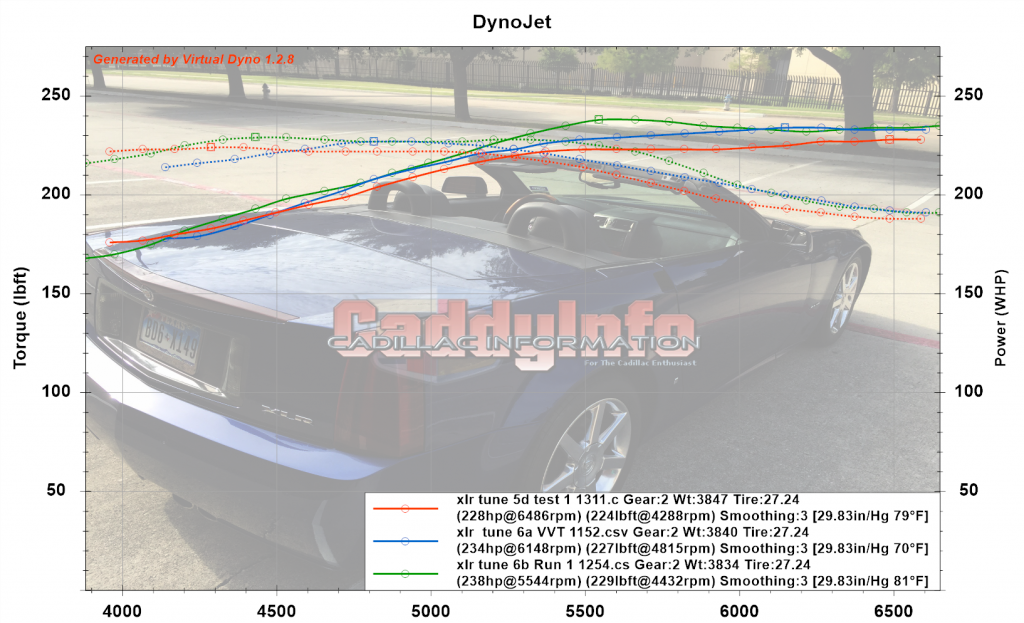
In this chart the update run is in GREEN, the earlier today run in BLUE and the comparison run Tune 5D in RED. What we see is close match between blue and green EXCEPT in the 4200-5800 range where starting the retard of the intake cam early picked up 5 whp in that range.
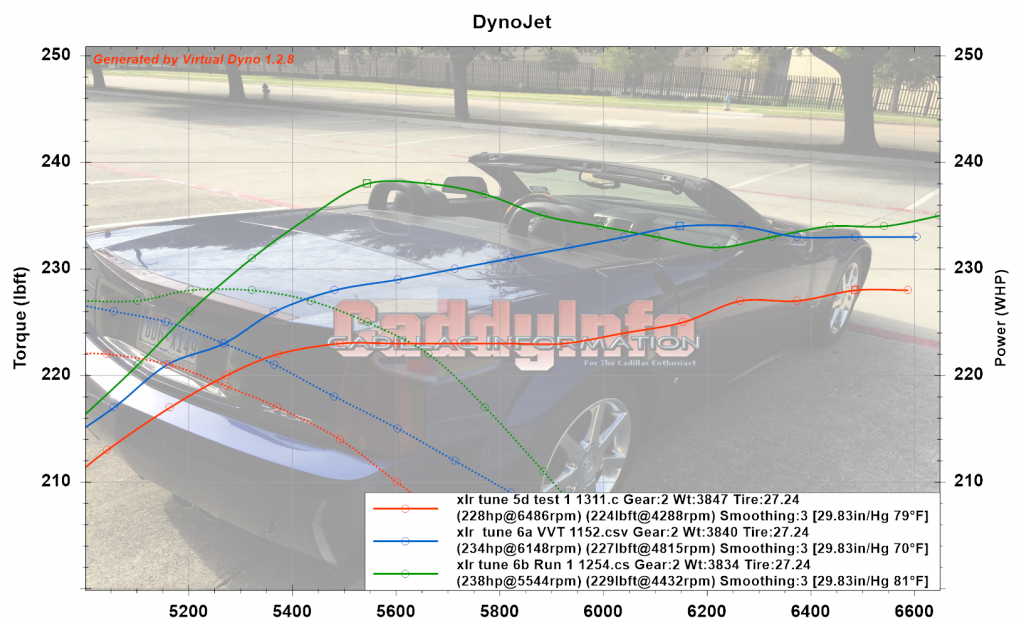
This is the same chart zoomed in. Around 5700 the 6B change is almost 9 whp above the 6A tune. At 5200 we are still at high torque so approx 0.63 airmass. The OEM intake advance was 12-11-8-3-2-2 from 5200-5600-6000-6400-6800-7200 at 0.64. My test 6B is 8-7-4-0-0-0 intake advance. It may actually want to stay at 7 degrees from 5600 to redline?
The second part of the test, trimming the exhaust to ensure overlap remained the same and try to get back to upward slope at the end of the red run into the green run. This seems to have worked but we’ll see how it looks in future tests.
Update 2:
Started test of tune 6D which expanded the VVT mods down 400 rpm and up through 6800 RPM.
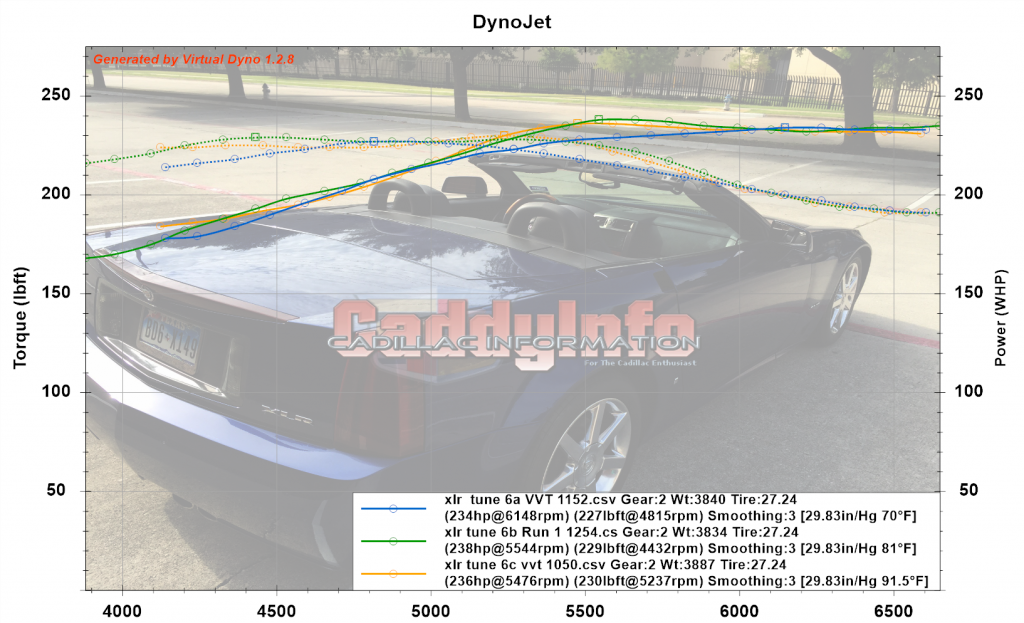
The yellow line is the 6C run. Comparing the 6C and 6B curves, the 6C appears to start earlier, which is what we wanted. However, it does not hold up from 6000-6800 RPM. For the next Tune, 6D, I will return to 6B above 6000 RPM.
This run had another interesting incidence of freezing the VCM scanner, and then tilting the XLR. I ended up in limp home mode, where I was able to use a code reader to reset the DTCs, after which the HPTuners VCM scanner was able to work as normal. The test run for 6C may have been effected, but seems to still have been strong. I am not sure what is causing these interrupts, but they are exciting.
I am glad to see 6C repeat the strong hump from 6B. I plan to mix 6C below 5500 and 6B above for 6D.

